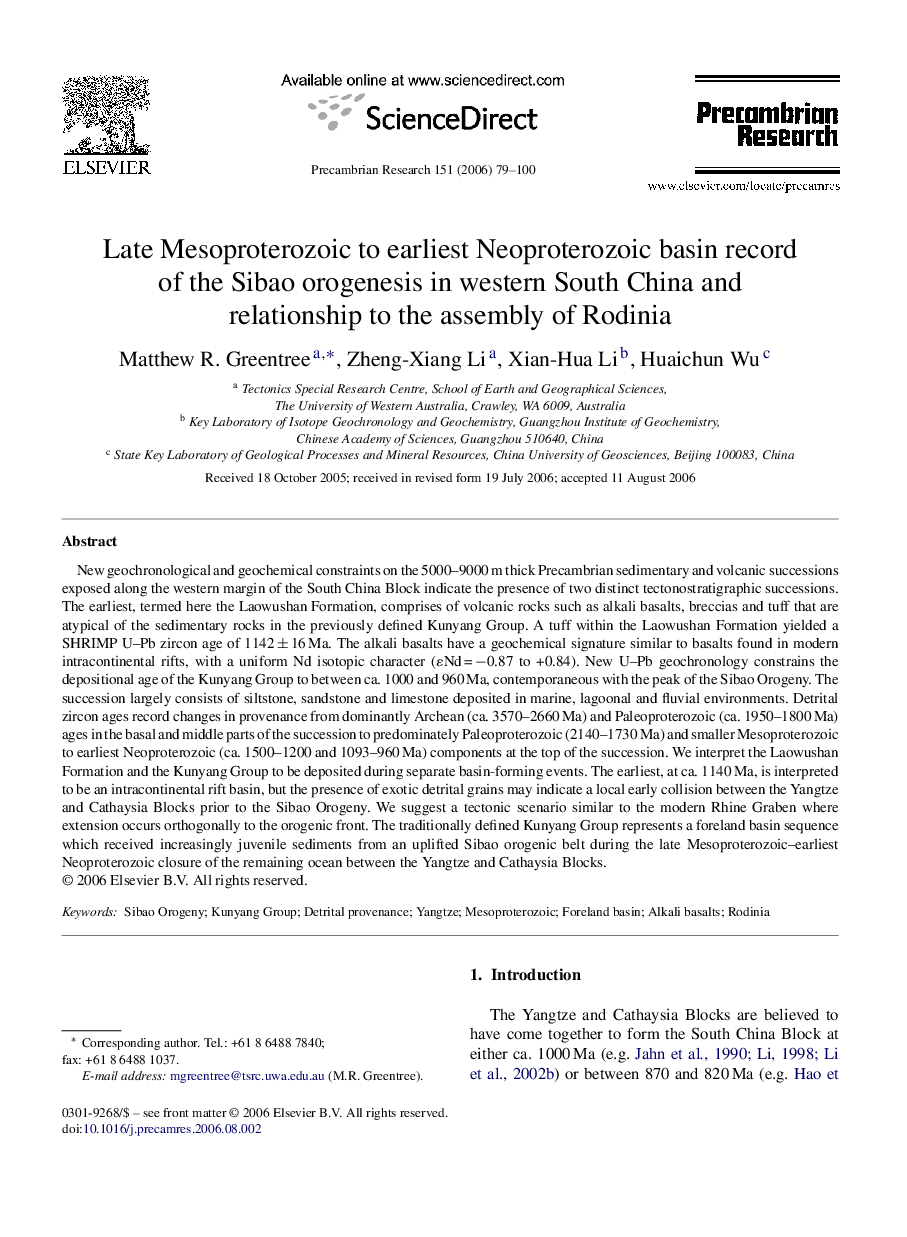| کد مقاله | کد نشریه | سال انتشار | مقاله انگلیسی | نسخه تمام متن |
|---|---|---|---|---|
| 4724759 | 1639727 | 2006 | 22 صفحه PDF | دانلود رایگان |

New geochronological and geochemical constraints on the 5000–9000 m thick Precambrian sedimentary and volcanic successions exposed along the western margin of the South China Block indicate the presence of two distinct tectonostratigraphic successions. The earliest, termed here the Laowushan Formation, comprises of volcanic rocks such as alkali basalts, breccias and tuff that are atypical of the sedimentary rocks in the previously defined Kunyang Group. A tuff within the Laowushan Formation yielded a SHRIMP U–Pb zircon age of 1142 ± 16 Ma. The alkali basalts have a geochemical signature similar to basalts found in modern intracontinental rifts, with a uniform Nd isotopic character (ɛNd = −0.87 to +0.84). New U–Pb geochronology constrains the depositional age of the Kunyang Group to between ca. 1000 and 960 Ma, contemporaneous with the peak of the Sibao Orogeny. The succession largely consists of siltstone, sandstone and limestone deposited in marine, lagoonal and fluvial environments. Detrital zircon ages record changes in provenance from dominantly Archean (ca. 3570–2660 Ma) and Paleoproterozoic (ca. 1950–1800 Ma) ages in the basal and middle parts of the succession to predominately Paleoproterozoic (2140–1730 Ma) and smaller Mesoproterozoic to earliest Neoproterozoic (ca. 1500–1200 and 1093–960 Ma) components at the top of the succession. We interpret the Laowushan Formation and the Kunyang Group to be deposited during separate basin-forming events. The earliest, at ca. 1140 Ma, is interpreted to be an intracontinental rift basin, but the presence of exotic detrital grains may indicate a local early collision between the Yangtze and Cathaysia Blocks prior to the Sibao Orogeny. We suggest a tectonic scenario similar to the modern Rhine Graben where extension occurs orthogonally to the orogenic front. The traditionally defined Kunyang Group represents a foreland basin sequence which received increasingly juvenile sediments from an uplifted Sibao orogenic belt during the late Mesoproterozoic–earliest Neoproterozoic closure of the remaining ocean between the Yangtze and Cathaysia Blocks.
Journal: Precambrian Research - Volume 151, Issues 1–2, 1 December 2006, Pages 79–100